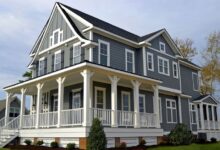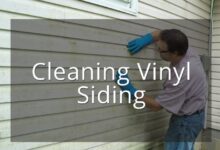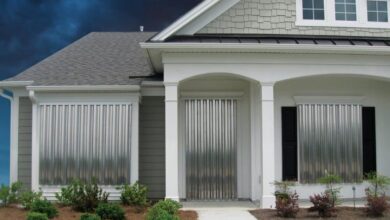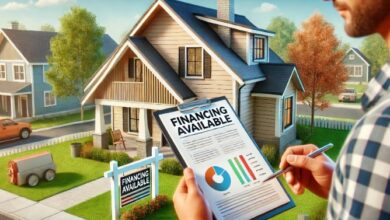If you’re restoring or upgrading a historic home, choosing the right siding is crucial to maintaining its charm while ensuring durability and energy efficiency. Historic homes often come with unique challenges, from matching the original aesthetic to addressing modern-day requirements like insulation and weather resistance. In this guide, we’ll cover everything you need to know about siding for historic homes, including the best materials, benefits, and where to buy them.
Why Choose Siding for Historic Homes?
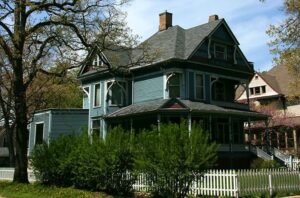
When it comes to historic homes, siding isn’t just about aesthetics; it’s about preserving the integrity of the home while meeting the demands of the present day. The right siding can protect your home from harsh weather, reduce energy costs, and add value to your property. Moreover, it ensures that your home retains its historical character.
Choosing the right siding for historic homes is essential because it preserves both the appearance and functionality of the property. Here’s why you should consider upgrading the siding on your historic home:
- Preservation of Architectural Integrity: Matching the right siding style helps maintain the home’s original appearance.
- Durability: High-quality materials prevent costly repairs and increase the lifespan of your home’s exterior.
- Energy Efficiency: Modern materials help reduce heating and cooling costs.
- Value: Quality siding can enhance the market value of your historic home.
Best Siding Options for Historic Homes
When it comes to historic homes, traditional materials like wood or clapboard siding are often preferred to maintain the home’s original character. However, modern alternatives like fiber cement and vinyl can offer better durability and lower maintenance. Let’s explore some of the best options:
1. Wood Siding
Traditional wood siding is a top choice for historic homes. Whether it’s clapboard, shiplap, or board-and-batten, wood offers a classic aesthetic that’s hard to beat.
Benefits:
- Authenticity: Mimics the original look of historic homes.
- Versatility: Can be painted in any color to suit your preferences.
- Sustainability: Wood is a renewable resource when sourced responsibly.
Drawbacks:
- Requires regular maintenance (painting and sealing).
- Susceptible to termites and rot if not properly maintained.
Recommended Product: James Hardie HardiePlank Lap Siding
HardiePlank is a popular choice for homes requiring the classic wood look but without the high maintenance.
2. Fiber Cement Siding
Fiber cement siding has become a popular choice in recent years. It’s made from a mixture of cement, sand, and cellulose fibers, giving it the look of wood while providing superior durability.
Benefits:
- Long-Lasting: Can last up to 50 years with little maintenance.
- Weather Resistant: Resistant to wind, fire, and pests.
- Low Maintenance: No need for frequent painting or sealing.
Drawbacks:
- Heavier than wood, requiring professional installation.
- Can be more expensive upfront.
Recommended Product: CertainTeed WeatherBoards Fiber Cement Siding
CertainTeed’s WeatherBoards is ideal for homeowners who want the classic look of wood with modern benefits.
3. Vinyl Siding
While vinyl siding is often considered a more modern material, its versatility and ease of maintenance make it an excellent choice for some historic homes, especially if you are on a budget.
Benefits:
- Cost-Effective: One of the most affordable siding options.
- Low Maintenance: No need for painting or sealing.
- Variety of Styles: Available in many colors and patterns.
Drawbacks:
- Not as durable or long-lasting as fiber cement or wood.
- Can look artificial if not installed correctly.
Recommended Product: Mastic Vinyl Siding
Mastic offers a wide range of vinyl siding options that can replicate wood’s appearance.
4. Metal Siding
Metal siding, especially aluminum and steel, is a durable and low-maintenance option that can fit a wide range of historic styles.
Benefits:
- Durability: Resists weather, fire, and insects.
- Energy Efficiency: Can reflect heat, reducing cooling costs.
- Low Maintenance: Doesn’t need frequent painting or repairs.
Drawbacks:
- Prone to denting or scratching.
- Might not offer the classic aesthetic some homeowners desire.
Recommended Product: Azek Steel Siding
Azek’s steel siding is a great option for historic homes that need durability with a modern edge.
5. Engineered Wood Siding
Engineered wood siding is made from wood fibers compressed into panels. It looks like wood but is treated to resist decay and insect damage.
Benefits:
- Classic Look: Offers the appearance of natural wood.
- Durable: Resistant to pests, moisture, and warping.
- Cost-Effective: More affordable than solid wood siding.
Drawbacks:
- Requires painting to maintain its appearance.
- Not as long-lasting as fiber cement.
Recommended Product: LP SmartSide Engineered Wood Siding
LP SmartSide offers engineered wood products that combine durability with a wood-like aesthetic.
Comparison Table: Siding Options for Historic Homes
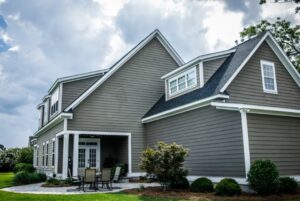
| Product | Use Case | Pros | Cons | Price Range | Features |
|---|---|---|---|---|---|
| James Hardie HardiePlank | Ideal for maintaining classic look | Durable, low maintenance, weather-resistant | More expensive, requires professional install | $5-$8 per sq.ft | Fiber-cement, fire-resistant, energy-efficient |
| CertainTeed WeatherBoards | Perfect for durability and historic aesthetic | Long-lasting, resistant to fire and pests | Expensive, requires installation | $7-$9 per sq.ft | Available in multiple colors, resists fading |
| Mastic Vinyl Siding | Best for budget-conscious historic homes | Low maintenance, affordable | Looks artificial if poorly installed | $3-$5 per sq.ft | Wide variety of colors and patterns |
| Azek Steel Siding | Ideal for modern aesthetic with durability | Extremely durable, energy-efficient | Prone to dents, limited color choices | $6-$10 per sq.ft | Energy-efficient, long-lasting, fire-resistant |
| LP SmartSide | Great for homes requiring wood-like aesthetics | Affordable, durable, pest-resistant | Needs painting, not as long-lasting as fiber cement | $4-$7 per sq.ft | Engineered wood, resists warping and moisture |
Where to Buy and How to Purchase
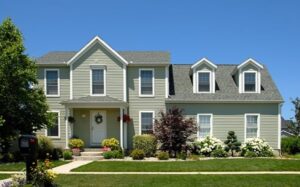
When you’re ready to upgrade the siding of your historic home, it’s important to know where to buy high-quality materials that match both your aesthetic and functional needs. Here’s a guide on where to purchase siding options, how to buy them, and what to consider when making your purchase. 💡
1. James Hardie – Fiber Cement Siding
James Hardie is a leading manufacturer of fiber-cement siding, offering a variety of options that can perfectly complement the aesthetic of a historic home.
- Where to Buy:
- Visit the official James Hardie website to explore products and find certified dealers near you.
- Available at major home improvement retailers like Home Depot and Lowe’s.
- How to Purchase:
- Online: You can request a quote or contact a local distributor for pricing and availability.
- In-Store: Visit your nearest home improvement store to inspect samples and get an idea of your ideal siding color and texture.
- Installation: Since fiber cement can be tricky to install, James Hardie offers a network of professional installers to ensure the job is done right.
- Price Range: $5-$8 per sq. ft. depending on the product and installation costs.
2. CertainTeed – Fiber Cement & Vinyl Siding
CertainTeed is known for its high-performance siding, including options for both fiber cement and vinyl siding. They offer a variety of colors, textures, and finishes, which are ideal for historic home restorations.
- Where to Buy:
- Visit the official CertainTeed website to locate certified distributors in your area.
- Available in local Home Depot, Lowe’s, and specialized home improvement retailers.
- How to Purchase:
- Online: Browse through CertainTeed’s catalog to choose your preferred siding type. You can order directly or contact a supplier for more details.
- In-Store: CertainTeed products are typically available at large home improvement stores.
- Installation: CertainTeed provides access to an experienced network of professional contractors who are familiar with their products.
- Price Range: $7-$9 per sq. ft.
3. Mastic – Vinyl Siding
Mastic offers vinyl siding with a variety of finishes, perfect for homeowners looking for an affordable yet durable option. While vinyl siding may not be as historically accurate as wood, Mastic offers several styles that mimic the look of natural materials.
- Where to Buy:
- You can find Mastic siding directly through Mastic’s website or locate a dealer nearby.
- Available at most major home improvement stores like Home Depot, Lowe’s, and independent siding contractors.
- How to Purchase:
- Online: Browse the Mastic catalog to find the best options for your project. Some retailers offer online ordering.
- In-Store: Check out the different textures and colors of Mastic vinyl siding at home improvement retailers.
- Installation: Consider hiring a professional installer for the best results, as proper installation can prevent future issues.
- Price Range: $3-$5 per sq. ft.
4. Azek – Steel Siding
Azek provides steel siding that offers superior durability and low maintenance. If you’re looking for a modern touch that still complements the historic charm of your home, Azek’s steel siding is an excellent option.
- Where to Buy:
- Visit Azek’s official website for more details on products and to find a local distributor.
- Available through authorized retailers and contractors across the U.S.
- How to Purchase:
- Online: Request a quote and compare prices through Azek’s website or through authorized dealers.
- In-Store: Visit physical stores to view samples or schedule a consultation with a local contractor.
- Installation: Azek offers a network of certified professionals to install their products properly.
- Price Range: $6-$10 per sq. ft.
5. LP SmartSide – Engineered Wood Siding
LP SmartSide provides engineered wood siding that combines the natural look of wood with the durability of a manufactured product. It’s ideal for homeowners who want a historic aesthetic with modern benefits.
- Where to Buy:
- Visit LP SmartSide’s website to learn more and locate a dealer near you.
- Available at major home improvement chains like Home Depot and Lowe’s, as well as specialized distributors.
- How to Purchase:
- Online: LP SmartSide’s website allows you to request quotes and view local suppliers. You can also check for availability at online retailers.
- In-Store: Visit a local store to see physical samples, especially if you’re deciding between wood-like finishes.
- Installation: LP SmartSide provides access to skilled installers who are familiar with the product’s specifications and installation requirements.
- Price Range: $4-$7 per sq. ft.
How to Buy Siding for Historic Homes (Step-by-Step)
- Research & Decide on Material: Start by choosing the type of siding material that best fits your home’s aesthetic and functional needs (wood, fiber cement, vinyl, metal, or engineered wood).
- Get Samples: Visit your local supplier or order samples online to get a feel for the texture, color, and finish.
- Request Quotes: Whether you’re buying online or in-store, request a quote that includes both materials and installation costs.
- Check for Warranty: Review the manufacturer’s warranty to ensure long-term protection for your investment.
- Consult an Installer: If you’re not comfortable with DIY installation, contact a certified installer to get an estimate. Some brands, like James Hardie, offer direct connections to professional installers.
- Place Your Order: Once you’ve decided on the product and installation, place your order either online or in-store. If you’re ordering large quantities, be sure to double-check measurements.
- Enjoy Your New Siding: Once installed, your historic home will have a durable, aesthetically-pleasing exterior that stands the test of time!
Where to Buy Online
You can easily purchase siding materials for historic homes from trusted suppliers like:
- Home Depot – Great for purchasing a wide range of siding materials, from vinyl to fiber cement.
- Lowe’s – Offers different styles and materials for every kind of restoration project.
- James Hardie – Direct from the manufacturer for their premium fiber cement siding.
- CertainTeed – For high-end siding that offers both aesthetics and durability.
- LP SmartSide – A fantastic option for engineered wood siding.
FAQ: Everything You Need to Know
1. What is the best siding for a historic home?
The best siding depends on your aesthetic preferences, budget, and maintenance tolerance. Fiber cement and wood siding are popular for their durability and classic appearance.
2. How do I maintain siding on a historic home?
Regular maintenance includes cleaning, sealing, and painting the siding. Wood siding will require more frequent attention compared to fiber cement or metal options.
3. Is fiber cement siding good for historic homes?
Yes, fiber cement siding offers a traditional look with modern durability. It’s resistant to fire, pests, and weather, making it a great choice for historic homes.
4. Can I install siding myself?
Some siding types, like vinyl, can be installed as a DIY project, but materials like fiber cement or steel siding typically require professional installation.
5. Where can I buy historic home siding materials?
You can buy siding materials directly from manufacturers like James Hardie, CertainTeed, Mastic, and LP SmartSide, or from home improvement stores like Home Depot and Lowe’s.


